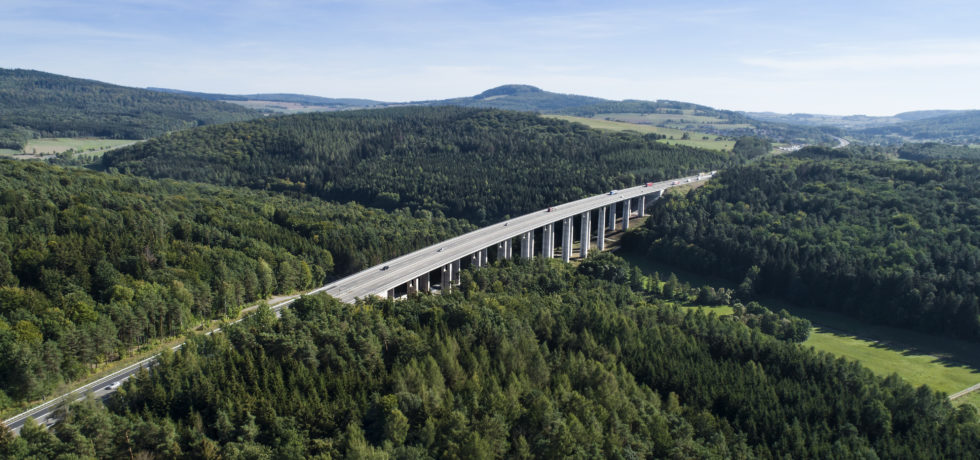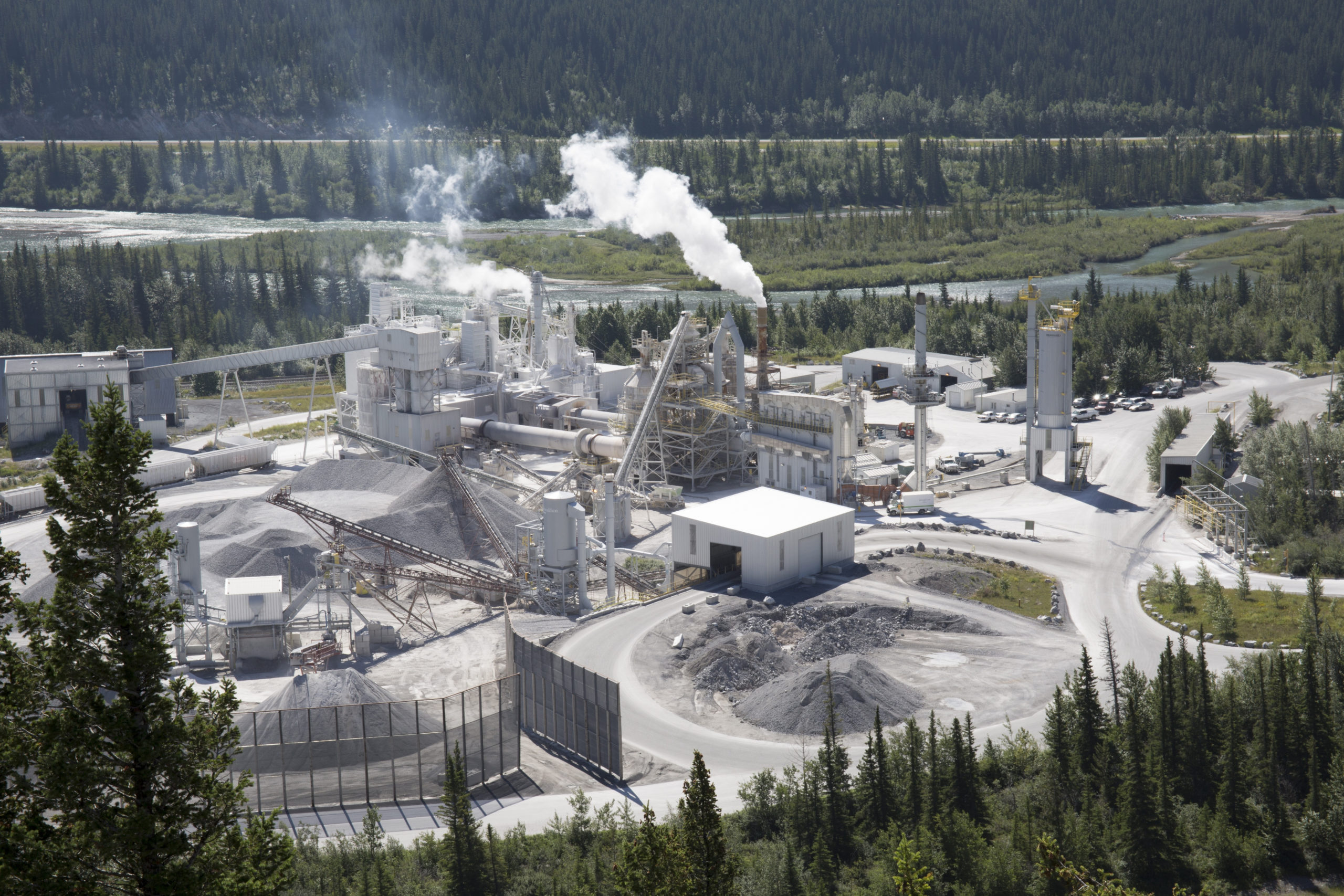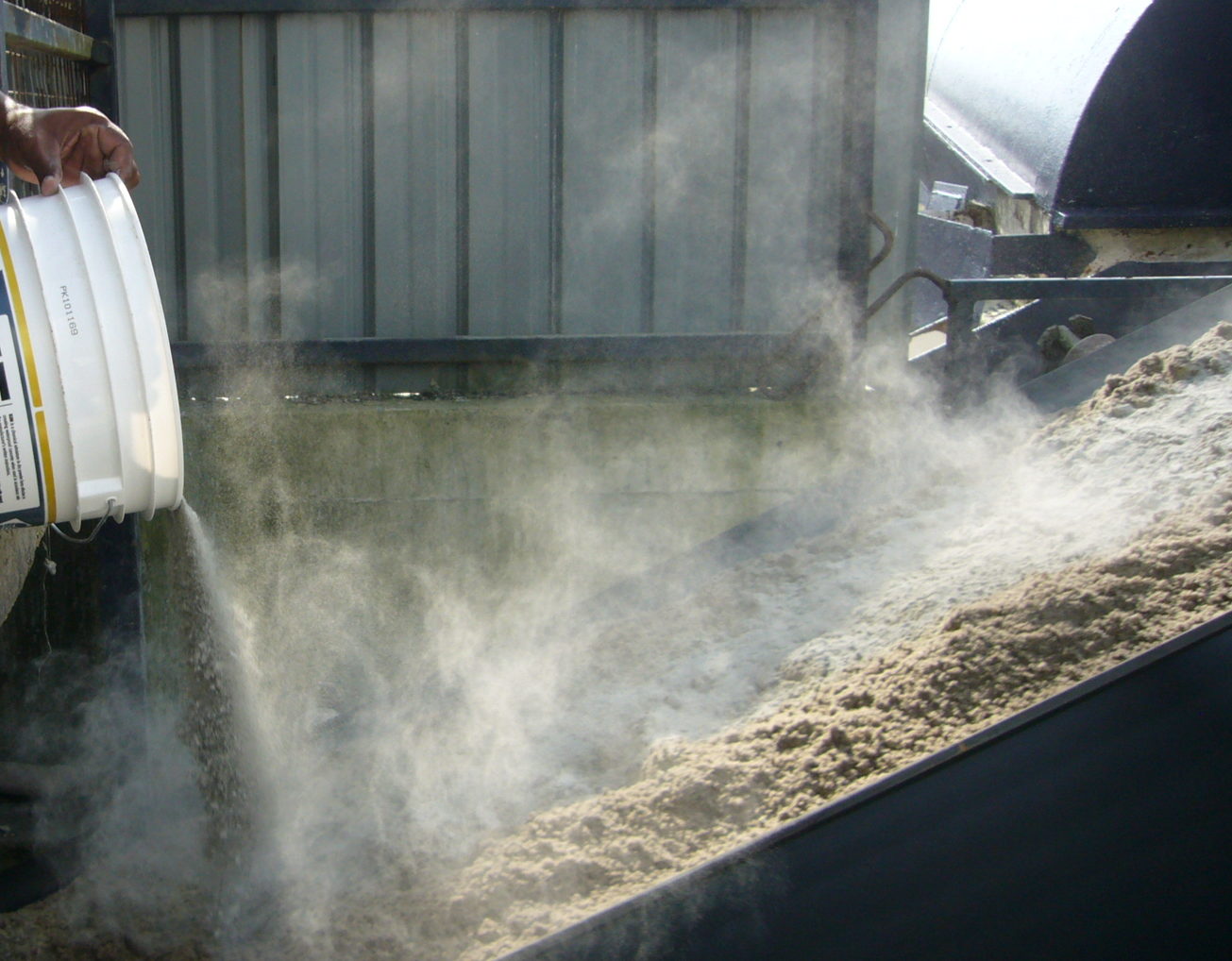Like many in the construction industry, you’d probably love it if net-zero-carbon concrete were available right now. After all, it’s touted as a way to help satisfy the demand for better sustainability and fewer CO2 emissions from construction. While it’s only a future possibility at the moment, there are many organizations out there working hard to make it a reality.
In fact, just last year, the Cement Association of Canada (CAC) partnered with the Government of Canada to create and support a plan to reach net-zero-carbon concrete by 2050. Not long after, the Global Cement and Concrete Association (GCCA), consisting of 23 affiliated associations and over 35 members, followed suit. They partnered with World Economic Forum to launch the Concrete Action for Climate initiative to globally promote net-zero-carbon concrete by 2050.
Of course, such actions are only a natural evolution for the construction industry. The interest in green practices is higher than ever, and there are several trends that are expected to push that interest further. Some of which include pressure from local governments, rising expectations from the public, and the need to diminish the impact of ongoing climate change.
But why have these trends created an industry focus on net-zero-carbon concrete? What exactly does it mean to have such concrete? And is net-zero-carbon concrete even possible?
Join us as we explore all these questions and more.
So, What Is Net-Zero-Carbon Concrete?
To start, we need a more solid idea on what net-zero-carbon concrete even is. There is a lot of eco-friendly terminology out there, and it’s not always clear what each term should mean.
Take carbon positive, for instance. That sounds suspiciously like someone is all for using carbon instead of reducing it, doesn’t it? But it actually has the same meaning as the following two terms: carbon negative and climate positive. What they all refer to is simply the action of surpassing net-zero carbon emissions by removing extra CO2 from the atmosphere.
And there is that net-zero term again, right in the definition of all those three terms. What does it actually represent?
Let’s Start by Defining the First Part of That Phrase
The term net-zero carbon (or net-zero carbon emissions) defines what happens when people balance the amount of greenhouse gases (GHG) they emit with the amount they remove. Essentially, it’s a way to avoid adding more carbon into the atmosphere while still being able to use it at the same time.
That allows us to continue necessary carbon-heavy practices like construction without harming the environment further. And it will likely act as a way for us to continue those practices while gradually transitioning to more environmentally friendly methods.
Keep in mind that this isn’t the only perception of the term net-zero carbon. For instance, the Government of Canada views the term in two ways. It can either be a term to define a balancing of emissions or as a way to emit no emissions whatsoever.
And Now, Let’s Get to the Concrete Part of It All
So, what does this mean for concrete itself?
Well, concrete is unfortunately a heavy carbon emitter. It contributes to around 8% of the world’s total carbon emissions. That might not seem like much initially. But because concrete is the most consumed material in the world (second only to water), there is some cause for concern that this percentage will only increase.
One Major Ingredient of Concrete Is a Heavy Carbon Emitter
Of course, it is also important to remember that concrete is made with a mix of ingredients. The main culprit for the heavy emissions in this mix is really the production of cement. During its manufacturing, limestone, clay, and other materials are fired in a kiln, which produces cement and a decent amount of CO2. More specifically, for each ton of cement made through that process, you get about two-thirds of a ton of released CO2.
The more such GHG emissions are released, the higher the concentration of them there is in the atmosphere. That has all kinds of negative effects on the environment, the health of people everywhere, and the economy. As a result, we’re now seeing all sorts of problems arise, such as the increase in annual temperatures, a greater risk for respiratory and cardiovascular concerns, and more severe damage to infrastructure around the world.
In Response, Industries Are Looking to Mitigate That
That’s why both cement and concrete industries have taken the initiative to reach net-zero-carbon concrete. They want to prevent these negative effects while also still allowing us to build much-needed structures for shelter, livelihoods, and more. And that starts with having concrete with emissions we can offset and eventually eliminate.
It’s Important, But It Remains Just One Part of a Bigger Net-Zero Emissions Plan
While concrete construction is popular and does need to lower emissions, it’s not the only aspect of society in need of a greener design. Many other sectors contribute to global GHG emissions. According to C2ES (the Center for Climate and Energy Solutions), some of the bigger contributors include the electricity and heat sector and the transportation sector. The first of which produces about 31% of the world’s emissions while the latter produces 15%.
It’s a clear sign of how widespread GHG emissions are in every industry. Recognizing that, many countries are looking to change how their entire region handles pollution.
Over 100 Countries Are Aiming to Produce Net-Zero Emissions and for Good Reason
With the amount of emissions we currently have, we are already seeing our potential future. And it is looking grim. The world has warmed by an increase of 2° F or 1.1° C, which has left a significant impact on multiple countries.
After All, the Effects of Climate Change Are Only Getting Worse
Here in Canada, that has led to heat waves throughout the country in the summer of 2021. During one particularly scorching heat wave in British Columbia (BC), the Village of Lytton hit a temperature of 121.1° F (49.5° C). Such a temperature was record-breaking, making Lytton not only the hottest place in Canada but a place hotter than any known area in South America or Europe. With such intense heat and dry conditions, it didn’t take long until a wildfire swept through the area and devastated the town.
That has not been the only wildfire disaster to come about either. Down in the United States of America (USA), climate change has made its western half much drier and warmer, making it more prone to extreme weather and more severe wildfires. As a result, there have been close to 100 major wildfires throughout a dozen different states in 2021.
Meanwhile, over in Europe, people have been experiencing more flooding, which has also been attributed to climate change. That has also been seen more recently in BC, indicating that climate change has had an ongoing impact.
That Has Only Increased the Interest in Net-Zero Emissions
The latest report led by the United Nations only emphasizes how dire this situation is. Scientists have been able to confirm that drastic weather changes are a direct effect from global warming. And they expect that the changes will only get worse as we are on a trajectory to warm up the planet by an increase of more than 5° F or 3° C.
In response, over 130 countries have started planning how they can reach net-zero emissions by around 2050 to minimize the increase in temperature and the effects of global warming. And at least 110 parties to the Paris Agreement have submitted a new or updated action plan with that in mind.
However, They Haven’t Hit the Required Targets for That Yet
Despite the response, no country has targets that will shift the increase in temperature significantly. Currently, according to the United Nations, we will be able to reach a 1% reduction in total GHG emissions by 2030. But what we actually need is a 45% reduction by 2030 to keep global warming to just an increase of 34.7° F or 1.5° C.
And if we want to reach net-zero emissions by 2050, the International Energy Agency (IEA) states that we will need to significantly overhaul our current approach.
Net-Zero-Carbon Emissions Are Still Possible by 2050
While the current picture painted is disheartening, there is still hope! The IEA has noted that net-zero-carbon emissions by 2050 are possible. And they’ve created a 223-page report showing just how we can reach that stage.
With over 400 milestones listed, the IEA describes in perfect detail just what we have to do to meet this ambitious goal. Some of the broader tasks they list include the following:
- Increasing our current annual investment in clean energy to nearly $4 trillion by 2030
- IEA points out that this activity in particular will create millions of new jobs, helping us boost the economy. It will also enable us to reach universal access to electricity and clean cooking.
- Decreasing the sales of passenger cars with combustion engines and the use of coal and oil plants
- To hit net-zero-carbon emissions by 2050, we need to move away from emission-heavy technology relatively soon. That means reducing our dependence on things like emission-based passenger cars by 2035 and doing the same with coal and oil power plants by 2040.
- Ensuring electricity hits net-zero emissions worldwide by 2040
- As the heat and electricity sector is such a big contributor to emissions, it will need to find a way to mitigate the impact soon. IEA believes it’s possible, but the effort to do so will require flexibility in how our electricity is handled, which may involve working more with hydrogen-based fuels, hydropower, and so on.
- Allowing new low-emission industries to develop further in 2045
- Following the IEA’s more detailed steps, by 2045, new low-emission technology should be more widespread. According to IEA’s vision, that could look like the majority of cars being electric or fuel cell and having planes that rely on advanced biofuels and synthetic fuels.
What Does That Mean for the Concrete and Cement Industries?
We’ve talked about the broader impact of what reaching net-zero-carbon emissions will look like. But what will that mean for the concrete and cement industries?
It will certainly mean a shift in how we handle both concrete and cement as we work toward eliminating the carbon emissions that come with them. But that shift has already started, with many companies and organizations taking steps to be greener. So while it will still be an effort, it will be a less daunting one.
Worldwide, Industries Can Follow the Climate Initiative of the GCCA
Under their Concrete Action for Climate initiative with World Economic Forum, the GCCA has affiliated themselves with the Mission Possible Partnership. Through this partnership, they, along with several other construction-related industries, aim to reduce their sector’s emissions.
It’s a positive sign for change as the GCCA claims they represent at least 40% of global cement production. So if you are part of either the concrete or cement industry and are looking for help in getting greener, they offer a great potential way to give you green guidance backed up with industrial insights.
As part of that, they list several critical goals that they aim to help people within their industry accomplish:
- Developing, supporting, and executing a 2050 roadmap for carbon-neutral concrete
- Increasing the use of waste and by-products as alternative fuels and raw materials
- Reusing concrete and demolished concrete more often
- Driving more demand for sustainable products
- Establishing metrics for determining the resilience of buildings and infrastructure
These are worthy goals for reaching net-zero-carbon emissions. But there is another plan in development you could follow instead.
In Canada Specifically, Companies Can Support the Roadmap to Net-Zero-Carbon Concrete
If you happen to be in Canada, you have a local roadmap to follow! As mentioned briefly earlier on, the Government of Canada has partnered with the CAC to develop and execute a plan for creating net-zero-carbon concrete by 2050. And they list the details for it quite extensively in a government press release.
These include the following planned activities:
- Increasing insight into and opportunities for the use of low-carbon products
- Encouraging acceptance of low-carbon concrete
- Providing support material, methods, and other tools to promote green practices
- Identifying projects that could reduce their GHG emissions for cement and concrete production
- Bolstering environmental product declarations and other green measuring tools for products
- Developing codes and standards that further technological advances in low-carbon structures
All of Us Have a Part We Can Play to Contribute to the Roadmap
As a company focused on serving the needs of our clients around the world, we know that there is always an opportunity to support sustainability in some form while meeting overall construction goals. With that in mind, here are some tips that you can apply to contribute to the net-zero roadmap.
To Start, We Can Look for Opportunities to Support Low-Carbon Technology
Your support might look different depending on your needs. But what matters is that low-carbon technology has that support. Whether that’s being vocal about its use in your industry, applying it yourself where necessary, pointing others in the direction of low-carbon options, or doing all three actions, it all counts.
Still, to get to that point, you need to know what’s even out there for you. So let’s look at some options.
Consider Your Concrete Waterproofing
Think of how you currently handle your concrete’s waterproofing.
Waterproofing Membranes May Not Be the Way Forward
Do you work with conventional technology like external waterproofing membranes? Then, it’s likely that you have a waterproofing system that contributes to carbon emissions.
While external membranes are made in a number of ways, their creation often makes use of materials like bitumen or asphalt. Bitumen itself is extracted from crude oil in a way that a single barrel of it may release around 134 kg of CO2. It’s also commonly used as a liquid binder for asphalt. So both of these materials can end up negatively impacting the environment. For example, once workers have applied a membrane with these materials to a concrete structure, it renders the concrete incapable of being recycled at the end of its service life, ensuring that it will end up in a landfill.
But what if your concrete waterproofing could avoid this issue altogether?
There Are Better Options Available Now
That’s a reality if you choose to move away from external membranes in favor of crystalline admixtures like our Krystol Internal Membrane™ (KIM®). The admixture is free of volatile organic compounds and can even come in pulpable bags so that there’s no waste left behind when it’s used.
All that’s needed is to place the pulpable KIM bags into the ready-mix truck during batching, and that’s it. No extra labor needed.
And it gives your concrete KIM’s Krystol® technology, allowing it to chemically react to water to form crystals that fill up any pores, capillaries, and hairline cracks in the concrete. That blocks any potential pathways for water. In return, you can save your worksite from contributing unnecessary carbon emissions and dealing with the extra labor that comes from external membranes.
With such a reliable and low-maintenance waterproofing system, you can expedite your construction schedule and consume fewer resources over the building’s operational life cycle. And because it doesn’t use a membrane, your concrete will remain fully recyclable at the end of its service life.
Ensure Your Own Concrete Is Low in Carbon
A big way to do that is to simply use less cement. It’s the main carbon-emitting ingredient in concrete, so with less cement produced for your concrete mix, you will emit fewer carbon emissions.
At first, it might feel a little counterintuitive. Many in the construction industry rely on cement and even add extra cement to increase their concrete’s strength. So wouldn’t using less cement be a detriment?
We’re happy to state that it doesn’t have to be! There are ways around using more cement for higher strength. For instance, you can stick to using aggregates that are at least 20 mm (0.79 in) in size. That will minimize the number of voids in your concrete mix, allowing you to use less cement paste to fill in the gaps.
You can also add water-reducing admixtures to your mix. These maintain your mix’s slump and strength after reducing cement content.
For even further cement reduction, consider using partial cement replacements, such as ground-granulated blast-furnace slag. This also recycles material from other industries and diverts them from landfills.
And if you’re just looking for concrete that has better abrasion and erosion resistance, you could forego the extra cement entirely for Hard-Cem®. As an integral hardening admixture, Hard-Cem increases the abrasion and erosion resistance of concrete paste. That in turn can double the wear life of the concrete without the need for unnecessarily high cement contents and reduce the need for concrete repair and replacement work. Because of that, Hard-Cem allows you to use a low-carbon concrete mix that will need less cement throughout its operational life cycle and still be capable of resisting highly abrasive environments.
Those Aren’t the Only Steps You Can Take for Net-Zero-Carbon Concrete
Whether you’re following the Canadian roadmap alongside us or working in an international capacity, there are still many other ways to work toward net-zero-carbon concrete. In particular, the global management consulting firm McKinsey & Company notes several other steps you could take. Here is a round-up of the most critical.
Cement Producers Are Starting to Leverage Analytics for Better Energy Efficiency
Based on McKinsey & Company’s data, cement kilns make up 90% of the energy used in cement manufacturing. So a good way to reduce carbon levels in this process is to make the energy use more efficient. It would be a significant monetary investment, but McKinsey & Company states that it’s an investment that will likely recoup itself a year or two later.
That sounds all right, so far. But what does energy efficiency look like in a cement plant?
Both McKinsey & Company and IBM suggest that advanced analytics is the way to go.
Currently, with the conventional automation systems that cement plants do have, workers see significant variation in performance. There’s often a 50% or more volatility in throughput, energy usage, and other operating parameters.
But when artificial intelligence (AI) is applied, there have been reports of plants improving their current situation. That’s because an AI has a real-time optimizer that allows it to continually improve optimization. It’s also capable of predicting the variability of key metrics. So if any metric is thrown outside of its prediction range, the AI can recommend changes to operations that improve key performance indicators.
During McKinsey & Company’s research on this, one plant used AI to better their throughput and energy efficiency by 10%. As a result, the plant was able to reduce their operations by 500 hours per year and increase production by 10%.
You Might Also Want to Look into Alternative Fuels for Heating Kilns
Currently, many cement plants still use fossil fuels, which create a carbon-intensive process. However, not all plants rely on such fuel. Some choose to work with alternatives, such as waste and biomass fuels.
Both do still emit some CO2. But using waste fuel before it decomposes in a landfill and produces methane (which has a warming potential 25 times that of CO2) is considerably better than dealing with the fewer CO2 emissions it produces as fuel. As for biomass, it balances out its emissions with the ones it captured during its lifetime, making it a somewhat neutral source of sorts.
Moreover, McKinsey & Company suggests if there were a bigger shift to using either fuel, by 2050, there would likely be a decrease in direct CO2 emissions by 9% for cement production.
It’s Also Worthwhile to See if You Can Substitute Cement Clinker
During cement production, certain elements eventually combine to create clinker. This substance typically looks like multiple small gray spheres and is eventually ground with gypsum and limestone to help create cement. Unfortunately, the amount of clinker used is proportional to how much CO2 is emitted.
A way to mitigate that is to substitute the clinker with cementitious materials. These can include natural and calcined pozzolans and industrial by-products.
And No Matter Where You Are in the Industry, Don’t Forget to Keep Up with the Latest Net-Zero Emission Information
There are many sources to keep up with for this. But we make it easier by offering information from multiple sources here on this blog and through our monthly newsletter, Concrete Thoughts. You only need to subscribe to each of them once, and you’ll soon get the updates you need on green building practices and more.
We Have a Lot of Work Ahead of Us, But It Is Possible and Certainly Worth It
As you can see, there are plenty of opportunities for us to improve the work that goes on in both cement and concrete industries. So while it can be overwhelming to see the significant impact that carbon emissions have already made on the world and the number of changes needed, there is still hope. Obtaining net-zero-carbon concrete is possible by 2050. Having a world with durable structures and a better environment is possible. We just need to keep those ideals in mind as we continue working with and developing greener and better industry practices.
















